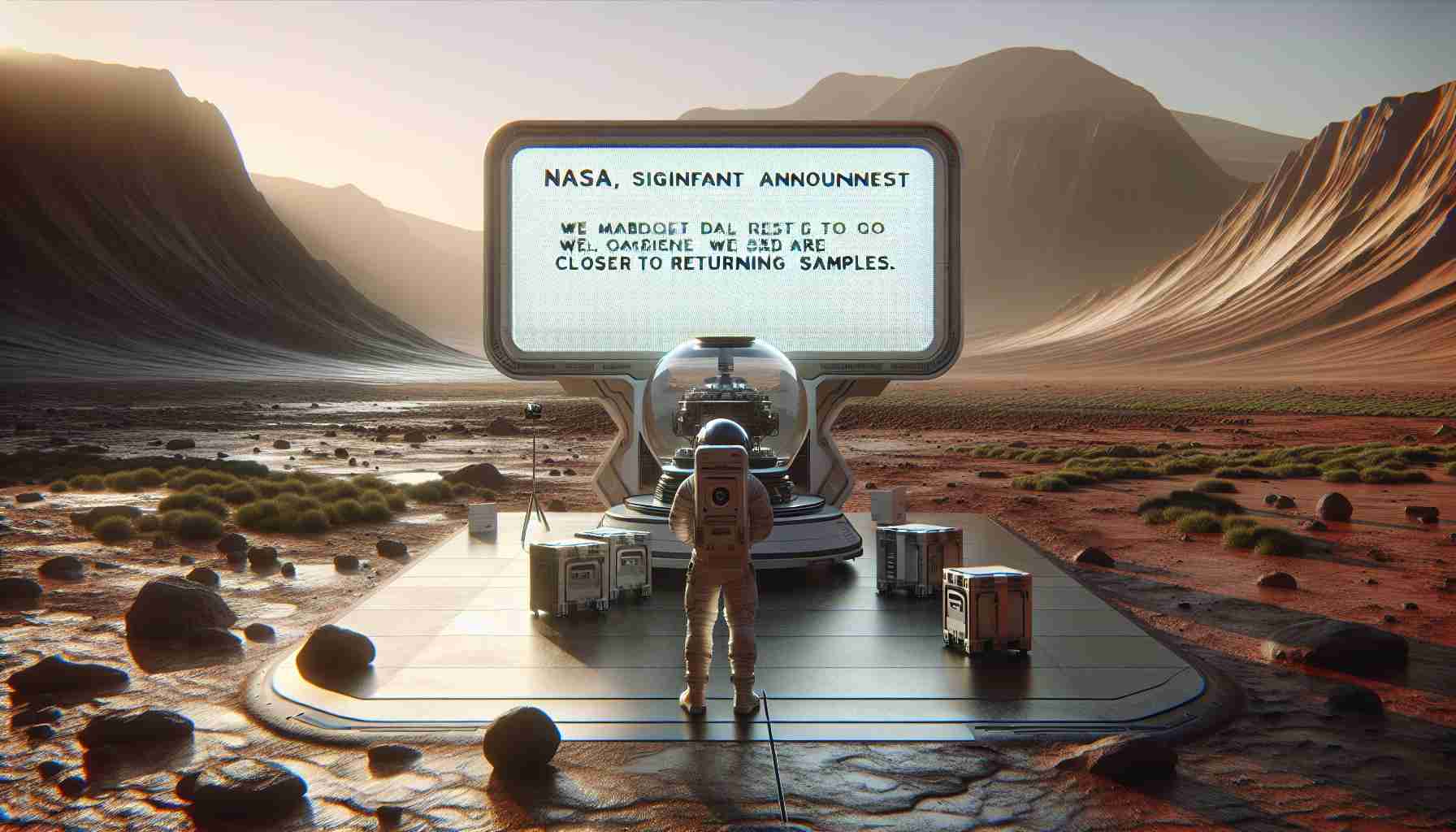Major Developments in the Mars Sample Return Mission
NASA is gearing up for a landmark announcement regarding its Mars Sample Return program. Scheduled for January 7, 2025, at 1:00 p.m. EST, the agency will hold an audio-only press conference featuring prominent figures, including NASA Administrator Bill Nelson and Nicky Fox, who oversee science missions. This crucial briefing will be accessible via NASA’s official website.
The spotlight will be on ways to diminish the costs and complexities of this ambitious mission, which aims to bring Martian samples back to Earth for analysis. The program’s goal has been in the works for over two decades, with the Perseverance rover at the heart of the operations after successfully landing in 2021.
Engineering Hurdles Ahead
Despite Perseverance’s successful sample collection, returning these samples poses significant challenges. The original plan involved a complex arrangement, including a dedicated lander, a rocket, and an ESA transport vehicle, all working in concert to facilitate the return journey.
However, escalating costs, now projected at up to $11 billion, along with delays pushing the timeline to 2040, have prompted NASA to reassess its strategy. With competitors like China planning their own Mars missions, there is a compelling urgency for NASA to expedite this project.
New Strategies for Success
The upcoming briefing is expected to introduce a revamped mission plan that emphasizes collaboration with private industry to improve efficiency and reduce expenses. This bold approach could reshape the future of planetary science. Join in on NASA’s website on January 7 to get the latest on this thrilling mission.
NASA’s Mars Sample Return Mission: Innovations and Challenges Ahead
Major Developments in the Mars Sample Return Mission
NASA is on the brink of an exciting announcement regarding its Mars Sample Return program, scheduled for January 7, 2025, at 1:00 p.m. EST. This audio-only press conference will feature key figures including NASA Administrator Bill Nelson and Nicky Fox, leading the conversation about the future of space exploration. The event can be accessed via NASA’s official website.
The Mars Sample Return mission has been a focal point of NASA’s planetary science initiatives for over twenty years. Its core objective is to collect Martian soil and rock samples, transport them back to Earth, and provide scientists with unprecedented opportunities for analysis. The mission heavily relies on the Perseverance rover, which successfully landed on Mars in February 2021 and has been collecting samples since then.
Engineering Hurdles Ahead
Despite Perseverance’s success, returning these samples presents multiple engineering challenges. Originally, the mission was designed with a sophisticated plan involving a dedicated lander, a launch vehicle, and support from the European Space Agency (ESA). However, the complexity of this arrangement, coupled with a significant increase in costs—now estimated at $11 billion—has necessitated a reevaluation of the mission.
Recent updates project the timeline for sample return to stretch into 2040, exacerbating the urgency for NASA to refine its strategies, especially with competitors such as China advancing their own Mars exploration plans. This new competitive landscape places additional pressure on NASA to reformulate their approach to the Mars Sample Return mission.
New Strategies for Success
The anticipated briefing on January 7 is expected to unveil innovative strategies focused on collaboration with private industry, which aims to enhance efficiency and cut down on costs. This paradigm shift could mark a significant departure from traditional NASA methodologies, opening doors to new partnerships that leverage cutting-edge technologies.
There are several key facets and potential benefits of collaborating with the private sector:
1. Cost Reduction: By involving commercial aerospace companies, NASA could potentially lower operational costs and streamline development.
2. Speeding Up Development: Partnerships with private entities may accelerate timelines, enabling faster engineering solutions and adaptations.
3. Leveraging Innovation: The private industry often brings fresh ideas and technological advancements, which can enhance mission capabilities.
Future Insights and Market Trends
The response to NASA’s changes is already being watched closely by industry experts. Key trends indicate a growing inclination towards public-private partnerships in space exploration, which may redefine mission architectures and funding models. The shift could lead to an era where commercial involvement is critical to successful missions.
Additionally, with sustainability taking center stage in all new projects, NASA may also emphasize eco-friendly technologies in partnerships, contributing to the broader objective of sustainable space exploration.
Conclusion
NASA’s Mars Sample Return mission is at a pivotal juncture, facing significant technological and financial challenges yet poised for groundbreaking innovations. By strategically collaborating with private companies, NASA aims to move forward efficiently while ensuring the mission’s scientific aspirations are achieved. Keep an eye on NASA’s official announcements and the evolution of this monumental project.
For more details and updates, visit NASA.
